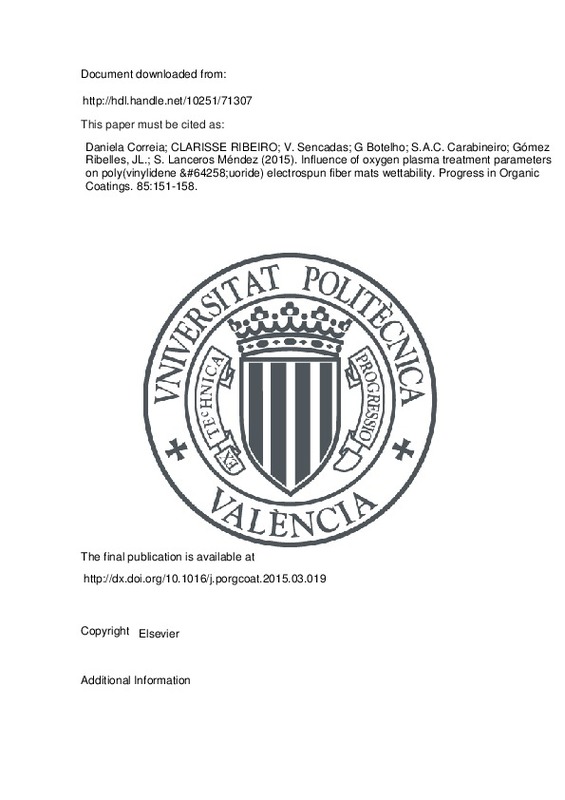JavaScript is disabled for your browser. Some features of this site may not work without it.
Buscar en RiuNet
Listar
Mi cuenta
Estadísticas
Ayuda RiuNet
Admin. UPV
Influence of oxygen plasma treatment parameters on poly(vinylidene fluoride) electrospun fiber mats wettability
Mostrar el registro completo del ítem
Correia, DM.; Ribeiro, C.; Sencadas, VJGDS.; Botelho, G.; Carabineiro, S.; Gómez Ribelles, JL.; Lanceros-Mendez, S. (2015). Influence of oxygen plasma treatment parameters on poly(vinylidene fluoride) electrospun fiber mats wettability. Progress in Organic Coatings. 85:151-158. https://doi.org/10.1016/j.porgcoat.2015.03.019
Por favor, use este identificador para citar o enlazar este ítem: http://hdl.handle.net/10251/71307
Ficheros en el ítem
Metadatos del ítem
| Título: | Influence of oxygen plasma treatment parameters on poly(vinylidene fluoride) electrospun fiber mats wettability | |
| Autor: | Correia, Daniela M. Ribeiro, Clarisse Sencadas, Vitor Joao Gomes Da Silva Botelho, G. Carabineiro, S.A.C. Lanceros-Mendez, Senentxu | |
| Entidad UPV: |
|
|
| Fecha difusión: |
|
|
| Resumen: |
Electrospun poly(vinylidene fluoride) (PVDF) fiber mats find applications in an increasing number of areas, such as battery separators, filtration and detection membranes, due to their excellent properties. However, there ...[+]
|
|
| Palabras clave: |
|
|
| Derechos de uso: | Reserva de todos los derechos | |
| Fuente: |
|
|
| DOI: |
|
|
| Editorial: |
|
|
| Versión del editor: | http://dx.doi.org/10.1016/j.porgcoat.2015.03.019 | |
| Código del Proyecto: |
...[+] |
|
| Agradecimientos: |
This work is funded by FEDER funds through the "Programa Operacional Fatores de Competitividade - COMPETE" and by national funds arranged by FCT - Fundacao para a Ciencia e a Tecnologia, project references NANO/NMed-SD/0156/2007, ...[+]
|
|
| Tipo: |
|







![[Cerrado]](/themes/UPV/images/candado.png)


